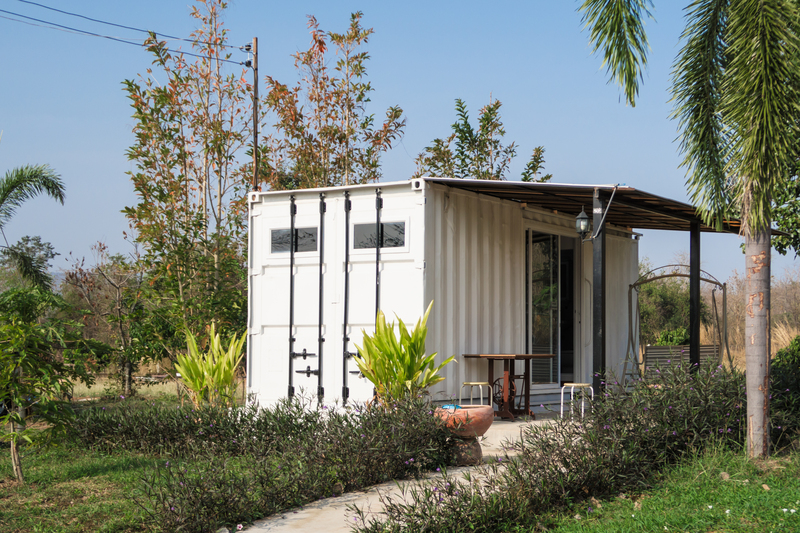Eco-Friendly Home Hacks: Transform Your Living Space
In an era where sustainability is crucial, making your home an eco-friendly haven is not just a trend, but a responsible lifestyle choice. Transforming your living space with eco-friendly practices can significantly reduce your carbon footprint and contribute to a healthier planet. Below, we explore a variety of creative and practical solutions to help you create a greener, more sustainable home.
1. Embrace Energy Efficiency
Energy efficiency is a cornerstone of an eco-friendly home. By optimizing your energy usage, you not only save on bills but also reduce environmental impact.
Switch to LED Lighting
- Upgrade your home lighting by replacing traditional bulbs with LED lights. LED bulbs consume up to 80% less energy and last significantly longer than incandescent bulbs.
- Utilize natural light during the day by opening blinds and curtains to reduce reliance on electrical lighting.
Implement Smart Thermostats
- Install smart thermostats to efficiently manage your heating and cooling systems. They allow you to schedule temperatures based on your routine, reducing unnecessary energy use.
- Maintain your heating and cooling systems with regular check-ups to ensure they are running efficiently.

2. Water Conservation Techniques
Water scarcity is a pressing global issue, and conserving water at home can make a substantial difference.
Install Low-Flow Fixtures
- Consider low-flow faucets and showerheads to reduce water usage without compromising on water pressure.
- Use aerators on taps to limit water flow and save on water consumption.
Collect Rainwater
- Set up a rain barrels in your garden to collect rainwater for irrigation. This reduces dependency on municipal water for gardening needs.
- Ensure your gutters and downspouts direct water into the collection systems effectively.
3. Eco-Friendly Cleaning Methods
Standard cleaning products often contain harsh chemicals that can be harmful to both the environment and your health.
Create Natural Cleaning Solutions
- Make use of simple ingredients like vinegar, baking soda, and lemon to create effective, non-toxic cleaning solutions.
- Consider using reusable cleaning cloths instead of disposable wipes to cut down on waste.
Adopt Green Products
- Purchase eco-friendly cleaning supplies labeled with biodegradable and non-toxic ingredients.
- Look for third-party certifications like the EPA's Safer Choice to ensure the products you buy adhere to environmental standards.
4. Sustainable Interior Design
Your home decor and furnishings can contribute significantly to your home's sustainability.
Choose Sustainable Materials
- Opt for furniture made from reclaimed or sustainably sourced wood to reduce timber consumption.
- Select natural fibers like organic cotton, linen, or hemp instead of synthetic fabrics for upholstery and linens.
Repurpose and Recycle
- Before discarding old furniture, consider repurposing or refurbishing it to extend its use.
- Engage in second-hand shopping to give furniture and decor items a second life, reducing the demand for new products.
5. Waste Reduction and Recycling
Reducing waste is a fundamental component of an eco-friendly lifestyle at home.
Implement a Recycling System
- Create a designated space in your home for sorting and storing recyclables before taking them to recycling centers.
- Educate your household on materials that can and cannot be recycled to avoid contamination of recyclable batches.
Compost Organic Waste
- Set up a composting system to handle kitchen waste like vegetable peels and coffee grounds.
- Use the compost to nourish your garden, promoting a fuller cycle of waste usage.

6. Eco-Friendly Landscaping
Your home's exterior can also reflect your commitment to sustainability through mindful landscaping practices.
Plant Native Species
- Choose native plants for your garden as they typically require less water and are more resilient to local pests and diseases.
- Implement xeriscaping techniques to reduce water usage efficiently.
Set Up a Green Roof or Wall
- A green roof or wall adds plant life to your home's structure, providing natural insulation and improving air quality.
- Utilize drought-tolerant plants that thrive with minimal water to further enhance sustainability.
Conclusion
Transforming your home into an eco-friendly space is both an enriching and impactful choice. By adopting energy-efficient practices, conserving water, using sustainable materials, and reducing waste, you contribute positively to the environment while inspiring others to do the same. Remember, every small step you take towards an eco-friendly home adds up to a more sustainable future for everyone. Embrace these changes, and watch your living space become a sanctuary that aligns with nature's rhythm.